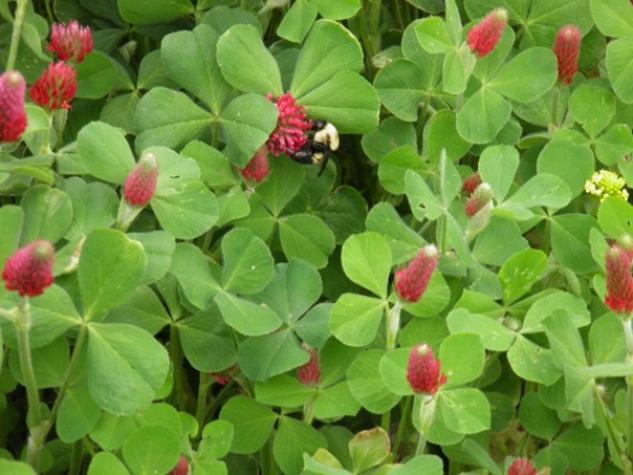COLUMBIA, Mo. – University of Missouri Extension recently released guidelines for managing cover crops to benefit pollinators and wildlife.
In the six-page guide, “Establishing and Managing Cover Crops in Missouri for Wildlife and Pollinator Benefits,” MU Extension wildlife specialist Robert Pierce tells how certain cover crop mixes can increase pollinator numbers while improving wildlife habitat, soil health and crop revenue.
Cover crops can be used with most agriculture production systems, including double-crop systems, after cash crop harvest or as livestock forage, according to Tim Reinbott, director of field operations for MU South Farm and Research Center. In addition to their agronomic and environmental benefits, cover crops can enhance wildlife and pollinator habitats on farms.
“Establishing and Managing Cover Crops in Missouri for Wildlife and Pollinator Benefits” is available for free download at extension.missouri.edu/publications/g9499.
Photo
Bumblebee on crimson clover
A bumblebee on crimson clover. Photo by Tim Reinbott.
Writer: Julie Harker
